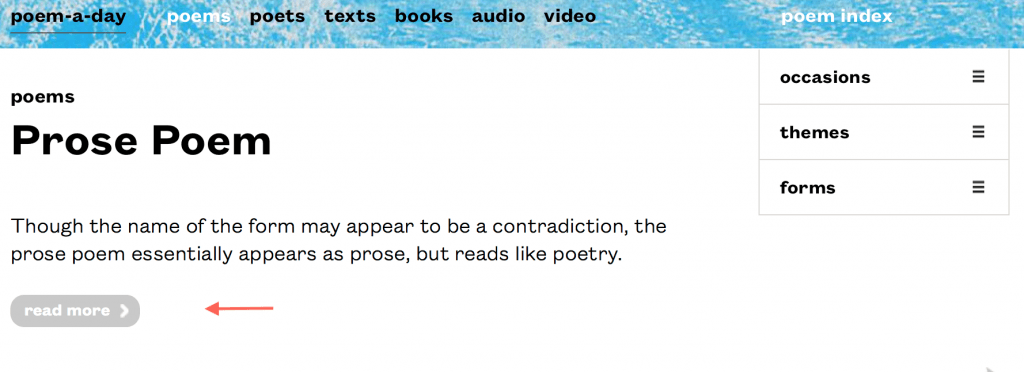Free verse is a popular poetic form especially, it seems, for students. It may be because “form” seems dated. Form suggests Shakespeare’s sonnets or Keats’ odes. But free verse is a form. In fact, it’s a form that’s over a century old.
Perhaps the reason that students prefer free verse is because it seems less intimidating than having to count syllables or worry about rhyme. Free verse, though, is not the same as “anything goes.” T.S. Eliot famously declared, “no verse is free for the man [or woman] who wants to do a good job.” William Carlos Williams similarly stated, “being an art form, verse cannot be free in the sense of having no limitations or guiding principles.” So what do we mean, then, by free verse?
Free verse means that there are no set rules to follow. It doesn’t have follow a particular rhyme scheme or syllable count. Rather, the poet and the poem establish the “rules.” The poet must figure out what form works for a particular poem. Line length, stanza count, and punctuation all help decide the musicality of a poem. If we don’t think about these things, we aren’t writing poetry. We’re writing lineated prose.
Most students choose free verse for their workshop poems. Discuss you “guiding principles” for your first poem. Were there any? Was it “anything goes”? How might you revise knowing now that free verse is not entirely free? If you wrote a formal poem, what did you notice about others’ free verse poems? How might you write one of your own?
 Kurt Vonnegut’s explanation of the “shape of stories” is incredibly accurate: “man falls down a hole,” “boy meets girl,” and “girl loses mother.” Those “shapes” appear in every genre, in every time period. Yet writers find a way to make the stories seem new.
Kurt Vonnegut’s explanation of the “shape of stories” is incredibly accurate: “man falls down a hole,” “boy meets girl,” and “girl loses mother.” Those “shapes” appear in every genre, in every time period. Yet writers find a way to make the stories seem new.


